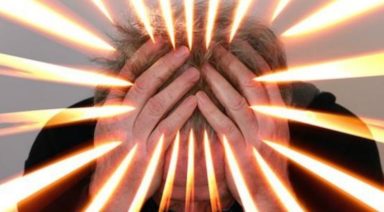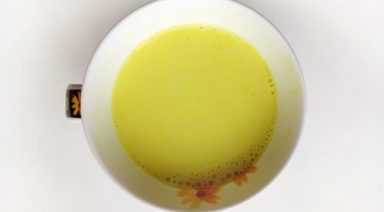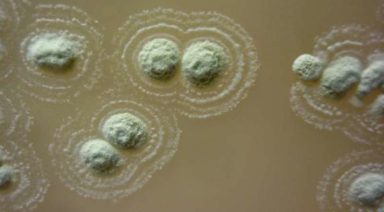Jo Cameron’s Life Without Pain; A Story of Rare Genetic Mutations

When Jo Cameron underwent a double hand surgery procedure, which would have left most people in excruciating pain, she left the hospital happy, vivacious, and in no pain whatsoever. At the time, Cameron was 65 years old and should have been even more susceptible to the surgery’s painful aftermath. Recognizing this anomalous behavior, doctors decided to investigate and found Cameron’s DNA contained two genetic mutations that made her unable to feel pain either physically or emotionally.
A Happy Genetic Mutation
Like anyone else, Cameron has been scraped, burned, and bruised throughout her life. But these physical injuries had little effect on her. After two surgeries, which left doctors baffled by her recovery — she needed only two aspirin the day after a hip-replacement surgery to deal with the pain — she was referred to a team of specialists at University College London’s Molecular Nociception Group (UCL).
Following a thorough DNA study, scientists at UCL published an unusual case report in the British Journal of Anaesthesia, revealing their findings of two genetic mutations:
Genetic Mutation #1:
This mutation affects the FAAH gene, which produces the enzyme responsible for breaking down anandamide — a neurotransmitter that’s been dubbed “the bliss molecule” (appropriately named after the Sanskrit word for bliss, "ananda") for its ability to bind to THC receptors, affecting mood, appetite, pain, and memory. When the FAAH genes break down anandamide, we experience physical and mental pain. But with a mutation like Cameron’s, the bliss molecule is allowed to preside, bringing out anandamide’s positive effects.
Surprisingly, this genetic mutation is not as uncommon as one may think, as about 20 percent of Americans are said to possess it. However, this percent of the populace doesn’t have Cameron’s second mutation, which compounds the effect and prevents her from experiencing any pain at all.
Genetic Mutation #2:
The discovery of this rare genetic mutation, named the FAAH-OUT gene, was said to be scientifically groundbreaking, as it was found to be a previously unidentified gene. As may be guessed from its name, the FAAH-OUT gene has a bearing on the FAAH gene, essentially turning down its activity. Working in concert, these two genetic mutations enabled Cameron to live her life unable to feel pain.
“I knew that I was happy-go-lucky, but it didn’t dawn on me that I was different. I thought it was just me. I didn’t know anything strange was going on until I was 65,” she told the The Guardian,
Development of New Pain-Relief Treatments
The search for reliable pain-relief treatments has been ongoing for millennia, with doctors and researchers historically relying on medications that target opioid receptors. But of course, this approach has led to an epidemic of addiction, abuse, and fatality, with more than 130 people now dying in the United States from opioid addiction daily.
Cameron’s genetic mutations bring the FAAH and FAAH-OUT genes into the spotlight, when it comes to pain-relief alternatives. While experimental drugs involving FAAH receptors previously failed, the FAAH-OUT discovery provides researchers more insight on how to target the endocannabinoid pathway involved in a variety of physiological and cognitive processes, including pain sensation.
To many sufferers who have turned to medical marijuana for relief, it is no surprise that working with endocannabinoid receptors should be considered a safe and successful means of ameliorating chronic pain. For years, individuals reeling from a range of maladies — from cancer to Crohn’s Disease to paralytic anxiety to suicidal depression — have fought to legalize marijuana as a powerful treatment option.
Is Being Unable to Feel Pain Necessarily Good?
While the prospect of dulling or totally eradicating pain may be alluring, it is important to bear in mind why all living beings experience pain in the first place: as a survival mechanism.
Pain is the catalyst for both physical and emotional lessons.
Experiencing physical pain alerts us to something being physiologically wrong. Just because one doesn’t have pain doesn’t mean he or she is immune to illness or injury. For example, if one sustains a wound and isn’t aware of it, left untreated, that wound could become infected and lead to something more serious like illness or even death; pain can be a biological warning pointing to a larger problem.
The same holds true for emotional pain. Serving as another survival mechanism, emotional pain generally runs along the spectrum of fear and happiness. Being highly in-tune with emotional well-being often results in increased self-awareness and when the balance shifts toward pain one is instinctually alerted to danger. Juxtaposed against agony or discomfort, a feeling of well-being also tends to foster a sense of safety.
The case of Cameron, who only realizes she’s burning herself on the oven when she smells singed flesh, but feels no pain to warn her, prompts a great philosophical question: What is life without pain?
Although pain can be regarded as a purely biological function, its absence seems to thwart the natural laws of the yin and yang. Can one truly know the height of happiness if he or she hasn’t known the depths of sorrow? While some may envy or dream of life without pain, it may be argued that everything in life is relative, which gives pain a rarely-appreciated purpose.
Check out Alan Watts’ explanation of the Zen Buddhist perspective of pain:
Can Earthing Repair Free Radical Damage, Improve Sleep, Increase Energy?

In all likelihood, you’ve tried Earthing (also known as grounding) whether you knew it or not. You know, you were strolling down the beach or sitting in your backyard, and you decided it was time for the shoes to come off. Sinking your toes into that warm grass or sand feels so good, doesn’t it? Turns out there’s a reason for that, and it’s more than just a moment of peace. It’s also a booster for your health!
You have the basic idea of Earthing, but getting into the specifics, it’s defined as the practice of obtaining the healing properties of the Earth through the simple act of touching it. You might be a little skeptical, but the good news is, there are medical practitioners who back it up, such Laura Koniver, M.D., of Summerville, S.C.
To understand the health benefits, Dr. Koniver says, we must also understand free radicals. You’ve probably heard of them as something to protect our bodies against, and you’re on the money. Free radicals are highly reactive atoms, molecules or ions that have unpaired electrons. Free radicals are “intimately connected to inflammation,” and inflammation is linked to cancer, heart disease, immune dysfunction, aging and cognitive decline. Dr. Koniver explains, “Using your body in any way, shape or form can create inflammation, so even during something healthy like yoga, where we’re stretching and creating microscopic tears to the muscles, we’re still building up free radicals.”
It’s pretty unavoidable, but it’s also just what happens living on our earth. It’s natural and normal, but it’s also something to actively combating, as free radicals do damage to our bodies. The most common and talked-about method is through antioxidants that neutralize the damage. However, Koniver maintains that Earthing is the best practice, and that consuming antioxidants is “definitely a drop in the bucket compared to what Earthing can do.”
The science behind Earthing is simple. According to Dr. Koniver, the free radicals that we build up throughout the day are positively charged, and the surface of the Earth is negatively charged.
“It’s a symbiotic thing,” adds Dr. Koniver. She argues that if we can get our vitamin D from the sun and our oxygen from the trees, we too can get healing electrons from the ground. In Dr. Koniver’s words, “We are meant to build up free radicals and inflammation by the way we live our lives, and the Earth is our docking base.”
A list of Earthing Health Benefits:
- Reducing inflammation by defusing excess positive electrons
- Reducing chronic pain
- Improving sleep
- Increasing energy
- Lowering stress and promoting calmness by reducing stress hormones
- Normalizing biological rhythms including circadian rhythm
- Improving blood pressure and blood flow
- Relieving muscle tension and headache
- Lessens menstrual and female hormone symptoms
- Speeds healing- used in some places to prevent bedsores
- Can eliminate jet lag
- Protecting the body from EMFs
- Shortens recovery time from injury or athletic activity
- Reducing or eliminating snoring
- Helping support adrenal health
- Weight loss
Getting started on Earthing is an extremely easy thing, as well. It’s free. It can be practiced almost anywhere. The instructions are simple. You just have to take off your shoes, to make sure you have exposure to the ground itself. You can wear socks if you want, as well. Koniver assures that you will still get the electron transfer necessary for the benefits.
This transfer, according to Koniver, can also be made through any point of the body, as long as that body part is making direct contact with the ground. So you can always take a nap in a sunny field, writing it off as a health benefit! How awesome is that?
Again, Earthing can be practiced almost anywhere, but Dr. Koniver points out that some places are better than others. “To me, if healthy grass is growing outside over a layer of soil, it’s connected to the crust of the Earth, and that’s all it needs to be,” says Koniver. Beaches are on the top of the list, as the moisture from the ground acts as a conductor, but grass, sand, rock, dirt, soil, all give health benefits as well.
Even concrete that’s been laid over the crust of the Earth can do the trick, though it’s not optimal. “Concrete acts as a semi-conductor,” says Koniver, “so if you live in a city with no real access to nature, you can map out a little patch and kick off your shoes.”
More good news about Earthing is that there is absolutely no such thing as overindulgence. Your body can benefit from just a few minutes, though 10 a day is the sweet spot as the minimum, according to Konniver. She truly believes you should work as much barefoot walking into your day as possible, whether it’s walking barefoot to get the mail or taking a quick stroll around your block.
In conclusion, it’s important to note that there are no current studies that definitively prove that Earthing has a major impact on human life. Some critics call it a placebo effect and nothing more. However, getting out in nature, grabbing a little sun, and moving your body a bit more during your day cannot be a bad thing for you. So there is nothing to fear if you want to give the practice a try. After all, all you have to do is kick off your shoes and sink your toes into earthy goodness. Ahhhh!




































